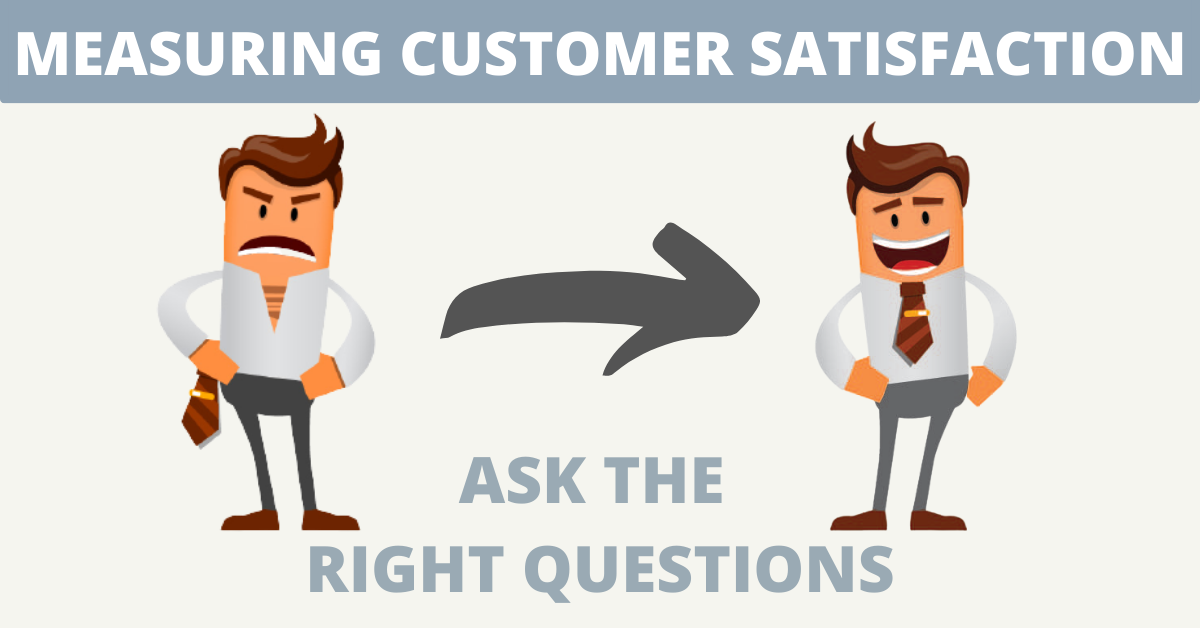If you want to gain an insight into your customer satisfaction level, a survey is what your need. But which questions do you absolutely need to ask in order to effectively measure such a vague concept as customer satisfaction? There are roughly 4 categories of questions that will help you effectively measure customer satisfaction: customer loyalty, overall satisfaction, perceived attribution of quality and intentions to repurchase. Let’s have a closer look at these customer satisfaction survey questions.
What do customers think of your product? How likely is it they will come back to your store for another purchase? How do they experience customer service? These are all questions related to the entire customer experience. To get a firm idea of how satisfied your customers are you will need to take into account all these parameters. A good starting point is the Net Promoter Score.
1) Measure customer loyalty with the Net Promoter Score
The Net Promoter Score gives an indication of the overall happiness of your customers by asking one question:
How likely are you to recommend [company/brand/product X]
to a friend/colleague/relative?
Respondents give a score from 0 (not at all likely) to 10 (extremely likely). Depending on the results, three categories can be distinguished:
- Promoters = respondents giving a 9 or 10 score
- Passives = respondents giving a 7 or 8 score
- Detractors = respondents giving a 0 to 6 score
The NPS is calculated by subtracting % Promoters and % Detractors and is expressed by a number (not a percentage). A positive NPS is considered good, anything above 10 is excellent.
Keep in mind that knowing the Net Promoter Score is just the beginning. You also need to know why your customers are giving you these scores. That’s why you should always ask respondents to motivate their score in an open question. After that, you can really get to work and start increasing your NPS.
For a more in-depth look on Net Promoter Score, please watch this webinar:
2) Overall customer satisfaction
Overall, how satisfied are you with [your product or service]?
The Net Promoter Score gives an indication of the overall customer loyalty, whereas the overall customer satisfaction score (CSAT) reflects the overall opinion of a consumer’s satisfaction experience with a product or service, evoking a certain emotional response. Dissatisfaction leads to purchase regret, while satisfaction leads to positive ideas.
3) Perceived attributions of quality
How satisfied are you with feature x of [our product/service]?
How important is feature x in your decision to select [our brand/company]
Attribute satisfaction measurements zoom in on how particular features of your products and services are experienced. However, that’s not enough. It’s also crucial to know how important that particular feature is to them. Hence the follow-up question.
4) Measure intentions to repurchase
Do you intend to return to [your company] within the next 30 days?
With this question customers reveal how likely it is that they will come back to your store to make another purchase. Satisfaction also influences other post-purchase actions, such as communicating to others about their experience, either through word of mouth or social media networks.
Follow-up on feedback to improve customer satisfaction
Evidently, measuring customer satisfaction is just the beginning. Net Promoter Score, overall satisfaction, attributions of quality and intentions to repurchase are the starting points. It’s important to really use the feedback to your advantage. That means following-up on customer experiences and improving your products and services where you can, based on the metrics you got from your surveys. Only then will you see an increase in customer satisfaction.
Discovered our survey templates yet?
To help our valued customers, our marketing research experts have come up with 15 free to use survey templates. These templates consist of predefined questions on various topics that can be copied and altered for use in your own survey. Our customer satisfaction survey templates, for instance, include all the different customer satisfaction questions discussed above. Using these will give you the data you need to fine-tune your customer policy.
Finding it hard to come up with the right questions? Simply pick your template and you’re good to go.

2 comments
Join the conversationGraham - July, 2016
Hi, I’m looking to create a employee satisfaction survey and found your page very interesting. Especially in regards to net promotor scores. I found this employee satifaction article in regards to question formats but not much information out there on how to analyse survey results. I realise your article focusses on customer satisfaction, but would you say the net promotor score would work just as well for an employee survey? Many Thanks, Graham
Gert Van Dessel - July, 2016
Hi Graham,
Although NPS is set up as a client satisfaction instrument, a lot of our clients also use this in employee satisfaction surveys.
The question to ask will then be: “On a scale of zero to ten, how likely is it you would recommend this company as a place to work?”
Bain and Company, the developers of NPS, call the NPS approach for employee surveys eNPS (Employee NPS). On their site you can find some more explanation an attention points.